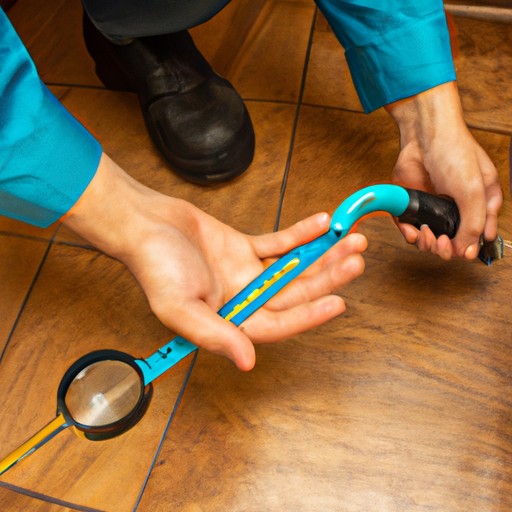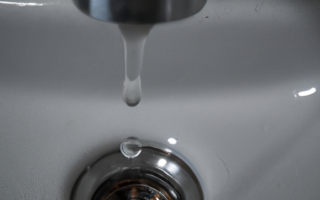The Importance of Leak Detection: Safeguarding Your Plumbing System
Leak detection is a vital aspect of maintaining a healthy plumbing system in your home. Hidden water leaks can cause significant damage if left undetected and untreated. Not only can they lead to structural issues like mold growth and rotting wood, but they can also result in wasting an excessive amount of water, increasing your utility bills.
Identifying hidden water leaks in your plumbing system is crucial to safeguard your home from these potential problems. Here are some signs that can help you detect hidden leaks:
1. Increased Water Bills: If you notice a sudden spike in your water bills without any apparent explanation, it could be a sign of an undetected water leak. Even a small leak can waste a significant amount of water over time.
2. Water Meter Reading: One way to confirm the presence of a hidden leak is by checking your water meter. Turn off all water sources in your home and note the reading on the meter. If the meter continues to run or shows an increase, it indicates a leak somewhere in your plumbing system.
3. Unusual Odors or Stains: Hidden leaks can often lead to musty or unpleasant odors in your home. You may also notice stains on walls, ceilings, or floors, indicating water damage caused by leakage.
4. Sounds of Running Water: If you hear the sound of running water when all faucets and fixtures are turned off, it could be a sign of a hidden leak. Listen carefully near plumbing fixtures and walls to pinpoint the source of the sound.
5. Wet or Damp Areas: Keep an eye out for any wet or damp areas in your home, especially near plumbing fixtures, walls, or floors. These areas may indicate an underlying water leak.
Detecting hidden water leaks in your plumbing system is essential to prevent further damage and keep your home safe. If you suspect a leak, it’s crucial to seek professional help from a licensed plumber. They have the expertise and tools to identify, locate, and repair any hidden leaks efficiently.
Regular maintenance and inspection of your plumbing system can also help detect and prevent hidden leaks. Taking proactive measures such as checking for signs of leaks, monitoring water usage, and addressing any potential issues promptly can save you from costly repairs and water damage in the long run.
In conclusion, leak detection plays a significant role in safeguarding your plumbing system. Identifying hidden water leaks using the signs mentioned above can help prevent potentially disastrous consequences. Remember to consult a professional plumber for any necessary repairs or maintenance to ensure the longevity and efficiency of your plumbing system.
Tips for Effective Leak Detection: Save Money and Prevent Water Damage
One of the most common and costly plumbing problems homeowners face is hidden water leaks. These leaks can go undetected for a long time, resulting in wasted water, high water bills, and even serious water damage to your home. To prevent such issues, it is crucial to have effective leak detection methods in place. In this article, we will discuss tips for identifying hidden water leaks in your plumbing system, allowing you to save money and prevent water damage.
1. Monitor Your Water Bill: A sudden increase in your water bill without an apparent reason could indicate a hidden water leak. Keep an eye on your water usage and bills to detect any significant changes that might be a sign of a leak.
2. Check Your Water Meter: To determine if you have a hidden water leak, start by turning off all water sources in your home. Then, check your water meter and write down the reading. Wait for a few hours without using any water, and then check the meter again. If the reading has changed, it indicates a leak.
3. Listen for Sounds of Running Water: Even when all water sources are turned off, if you hear the sound of running water, it could be a sign of a hidden leak. Pay attention to any unusual sounds coming from your plumbing system, such as dripping or hissing.
4. Inspect Your Walls, Ceilings, and Floors: Water leaks often leave behind visible signs of damage. Check your walls, ceilings, and floors for any water stains, discoloration, or warping. These signs could indicate an ongoing leak that needs to be addressed.
5. Test Your Toilet: Toilets are a common source of water leaks. Put a few drops of food coloring into the tank, wait for some time without flushing, and then check the bowl. If the water in the bowl changes color, it means there is a leak in the toilet mechanism.
6. Use Leak Detection Devices: Technology has made it easier to detect hidden water leaks. Consider using leak detection devices, such as moisture sensors or water alarms, that can alert you to the presence of leaks in areas that are hard to access or see.
By being vigilant and proactive in identifying hidden water leaks in your plumbing system, you can save money on water bills, prevent water damage, and preserve the integrity of your home. Regularly inspect your plumbing system and address any leaks promptly to maintain a healthy and efficient home.



